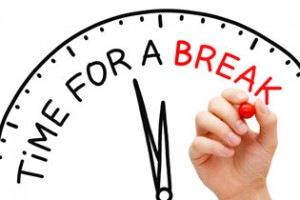 When studying for exams or powering through a research paper, everyone needs a break every so often. What, however, is the best break for the buck? In recent years, a poll of the most common study breaks would likely include YouTube, Facebook, email, twitter, and Netflix.
When studying for exams or powering through a research paper, everyone needs a break every so often. What, however, is the best break for the buck? In recent years, a poll of the most common study breaks would likely include YouTube, Facebook, email, twitter, and Netflix.
More often than not, these activities quickly turn from ten-minute study break to a 45 minute episode or a trip down the internet rabbit hole. Soon, more time is spent “breaking” than studying and suddenly it’s 2 AM. So much for that pre-test goodnight’s sleep.
Get Rid Of Distractions!
The accessibility of distractors has turned “study break” into code for procrastination and avoidance. Does that mean breaks are off-limits? Of course not. We just need to make sure students are choosing the right kind of break. The reason for taking a break is to give the mind a rest and allow the brain to rejuvenate with the intent of returning to the task refreshed.
The best breaks remove the brain from the task and environment they have been in, engage the full body, and have a defined time limit. Here are a few specifics to guide you:
Our Top 5 Tips For A Good Study Break
- Schedule your breaks periodically through your studying, and ahead of time. Make goals for yourself. “When I finish this section, I’ll take ten minutes.”
- Determine the time limit of your break. Set an actual timer and, most importantly, stick to it!
- Snacking can be a good break, but make sure it’s a healthy one. Taking the time to prepare some good brain food not only helps fuel your studying but provides some productive time away from the books.
- Get your body moving. Exercise is proven to increase brain function. If you don’t have time for a full workout, take the dog for a walk, run up and down the stairs a few times, or even do a ten minute “power clean” of your room.
- Avoid junk food, naps, and media. These things can slow you down and only make you more tired and less productive.
Experiment with different kinds of breaks, and be honest with yourself about which seemed to be most effective. By choosing the right kind of breaks and sticking to your timeline, you will be more productive, and feel better about the experience and yourself.
What is your favorite study break?





